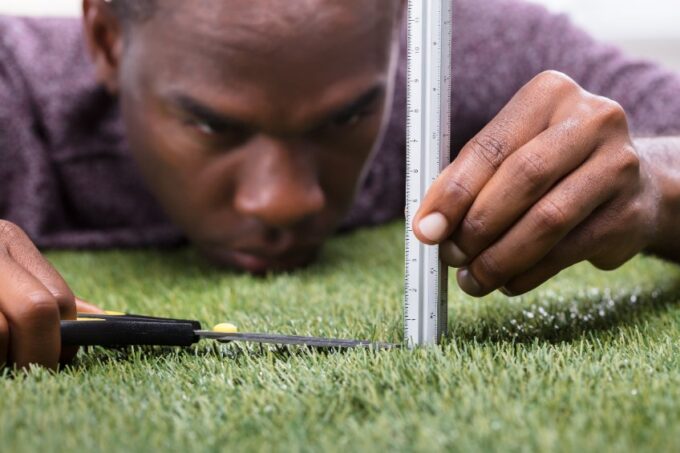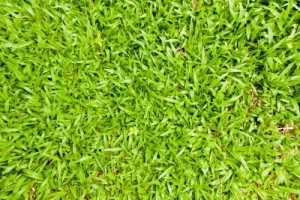3 Major Guidelines for Healthy Lawn Mowing
When people talk about lawn care tasks, chances are mowing is the first thing that comes to mind. That’s the thing we do most often when taking care of lawns. During the growing season, most lawns require you to mow them at least once a week just to keep up with how fast the grass is growing.
Since you have to mow so often, it’s easy for mowing to seem like just a routine maintenance task for your lawn. In reality, it’s one of the most important things you can do to maintain a healthy lawn. Choices such as how high you cut your grass and when you mow directly impact lawn health. These choices also influence how much fertilizer and irrigation a lawn will require.
By following guidelines for healthy lawn mowing, you can cut back on the amount of fertilizer your lawn needs and help lawns survive drought. Something as simple as changing the mowing height or deciding to mulch lawn clippings might be one of the best things you do for keeping the grass both healthy and attractive.
How High to Cut the Grass
The ideal mowing height for your lawn depends on the type of grass growing in your yard. As a general rule, cool-season grass should be mowed at a taller height than warm-season grasses.
For example, Kentucky bluegrass and fine fescues, hardy in USDA zones 2 through 7, are cool-season grasses that grow best when you mow them at 2½ to 3 inches tall. While some cool-season grasses can grow in Texas, most lawns in the Dallas-Fort Worth area will probably have warm-season grass.
Warm-season grasses tend to have thinner blades and a low, creeping pattern of growth. That means they can be mowed shorter than the cool-season grasses. Bermudagrass, hardy in USDA zones 7 through 10, is usually mowed between ½ and 1½ inches. Zoysia grass, hardy in USDA zones 6 through 9, prefers mowing heights between ¾ and 2 inches. One exception to this rule is Bahia grass, hardy in USDA zones 7 to 11, which prefers being mowed between 3 and 4 inches.
To help make your lawn lower maintenance, you can let the grass grow about 1 inch higher than the recommended range. Longer leaf blades encourage deep root formation and provide more leaf surface for photosynthesizing nutrients. This means your grass will require less frequent fertilization and have a higher drought tolerance.
When to Mow
How fast the grass grows is what determines how often you’ll need to mow it. To avoid stressing the lawn, never mow more than 1/3 of the total grass height. This means grass that you want to be 3 inches tall should be mowed when it reaches 4-1/2 inches. Grass with an ideal mowing height of 2 inches tall should be mowed when it reaches 3 inches high.
Warm-season grass grows the most quickly during the warm months of late spring, summer, and early fall. During peak growth, the grass might need to be mowed even more than once a week, perhaps every 3 to 5 days. Mowing will be less frequent as the weather cools, but you’ll still want to keep a close eye on the grass so it doesn’t become overgrown.
If you have a lawn with cool-season grasses, the lawn will go dormant if the weather becomes too warm. For these types of grasses, peak growth occurs during spring, fall, and mild winters.
What to Do with Clippings
Grass clippings contain a surprisingly high amount of nutrients and water. Leaving them on the lawn to decompose returns this moisture to the soil and decreases the need for supplemental fertilizer. This works best when you’re using a mulching lawnmower. Mulching mowers chop grass clippings more finely and distribute them more evenly than regular mowers.
As long as your grass is healthy, it’s a good idea to leave the clippings on the lawn. The only reasons—at least in terms of lawn-health—that you’d want to bag clippings is if you’re mowing a very overgrown yard, a yard with wet grass, or there’s a turf disease in part of the lawn that you don’t want to spread elsewhere. Mowers like the Toro Recycler let you easily switch between mulching and bagging modes and are an excellent choice if you plan to mulch regularly but want the option of bagging. The bagged clippings can be recycled by adding them to compost piles or by using the dry clippings as mulch.
Of course, in order to follow healthy mowing guidelines, you need a reliable lawnmower. Here are Richardson Saw & Lawnmower, we carry a wide range of mowers from the most reliable brands on the market. From small battery-powered push-mowers to commercial-grade zero-turn riding mowers, we have lawnmowers to match every lawn care need. We’ll be happy to answer any questions you might have and help you find the perfect lawnmower for your yard.




